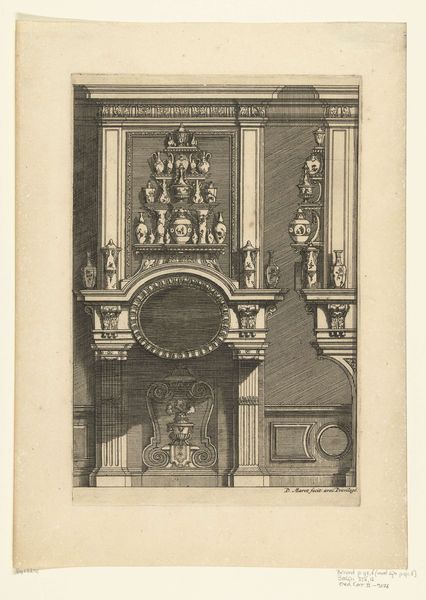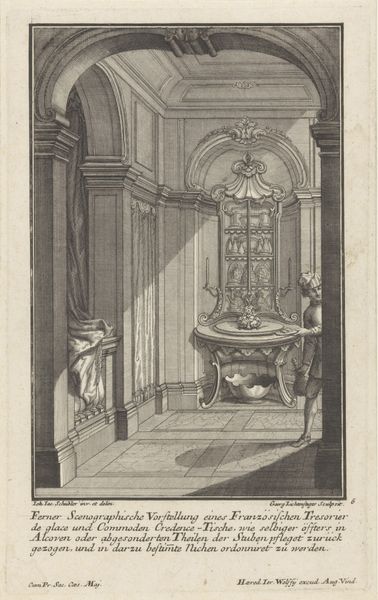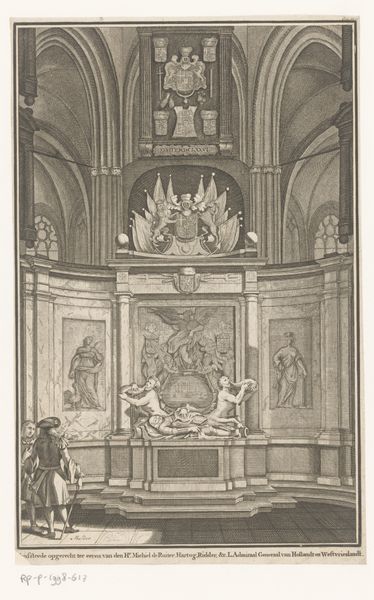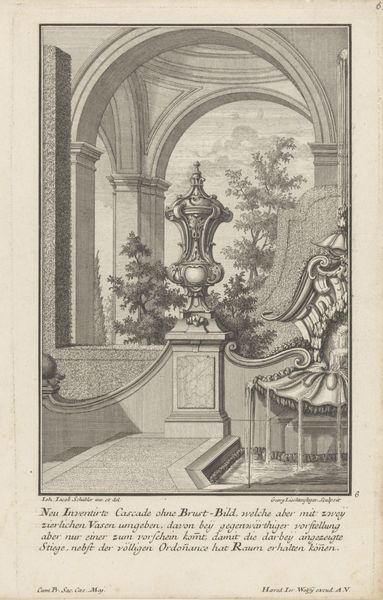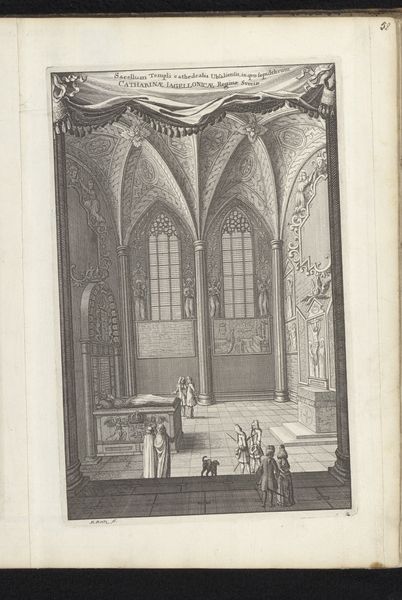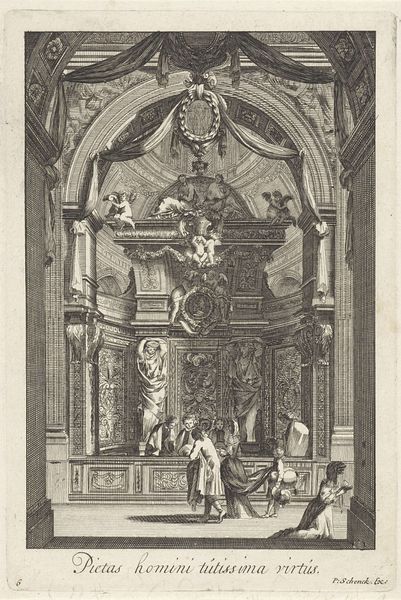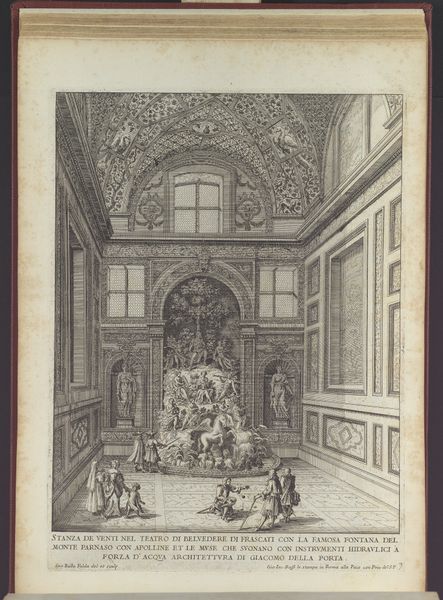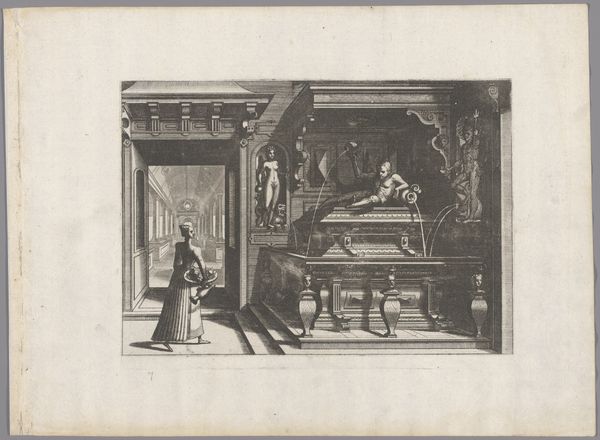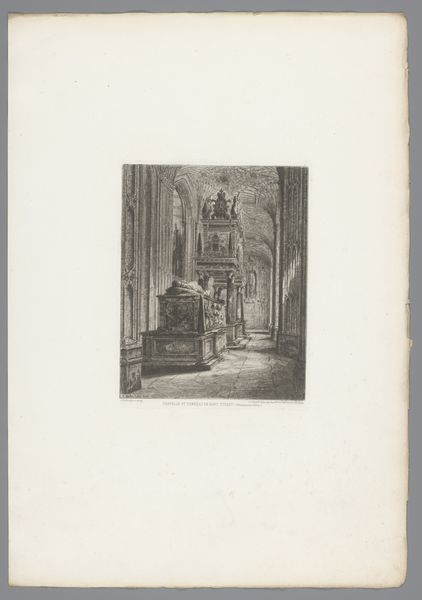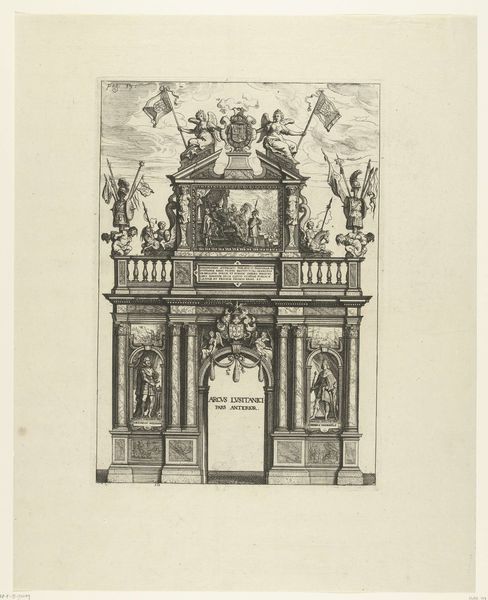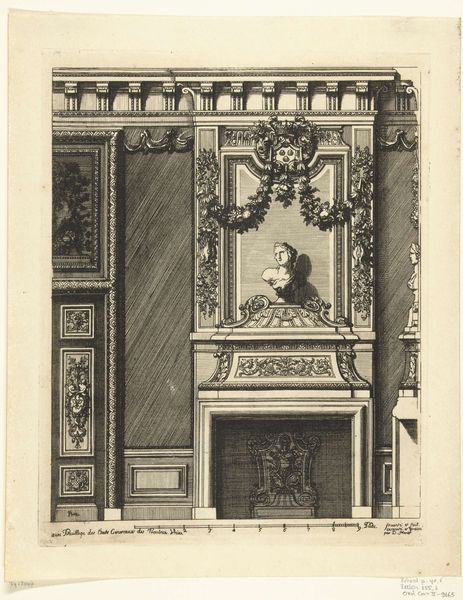
Praalgraf van Michiel de Ruyter in de Nieuwe Kerk te Amsterdam 1687 - 1726
0:00
0:00
josephmulder
Rijksmuseum
engraving, architecture
#
aged paper
#
toned paper
#
baroque
#
old engraving style
#
history-painting
#
engraving
#
architecture
Dimensions: height 284 mm, width 181 mm
Copyright: Rijks Museum: Open Domain
Curator: Welcome to the Rijksmuseum. Today, we'll be looking at Joseph Mulder’s engraving, "Praalgraf van Michiel de Ruyter in de Nieuwe Kerk te Amsterdam," created between 1687 and 1726. Editor: It’s a fairly detailed rendering of a monument inside a church. What immediately grabs me is the contrast between the dark engraving and the vast architectural space depicted. It creates a really dramatic effect. What do you see when you look at it? Curator: The visual elements are striking. The carefully rendered lines of the engraving contribute significantly to the image's internal structure. Notice the use of vertical lines of the cathedral which provide a strong sense of height, countered by the horizontal lines of the tomb itself creating a visual balance. These oppositions support the overall dynamic tension inherent to Baroque sensibilities. Editor: I see what you mean, the linear quality directs our eyes upward, following the architectural components. And how does that impact our reading of the central figure – Admiral de Ruyter? Curator: The strategic positioning of the tomb draws our gaze directly to it. The lines essentially frame and foreground it. Note the classical figures incorporated within the monument, frozen in static poses. How does their presence alter your perception? Editor: It is clear to me that they give it a kind of ageless, eternal quality…but now that I think about it… is the tension between temporality and eternity further accentuated by the aged look of the toned paper on which it is printed? Curator: A compelling question, and perhaps deliberately so! The paper is a material fact; its intrinsic qualities speak beyond mere representation, blurring time while underlining it. A brilliant observation, highlighting the strength in Mulder's manipulation of form. Editor: Wow, I never thought about the engraving itself as such a powerful force! It really has opened my eyes to the art's intentional composition, all contributing to a deeper message. Curator: Exactly. Analyzing these formal elements provides a framework for comprehending not just *what* we see, but *how* and *why* it resonates.
Comments
No comments
Be the first to comment and join the conversation on the ultimate creative platform.

